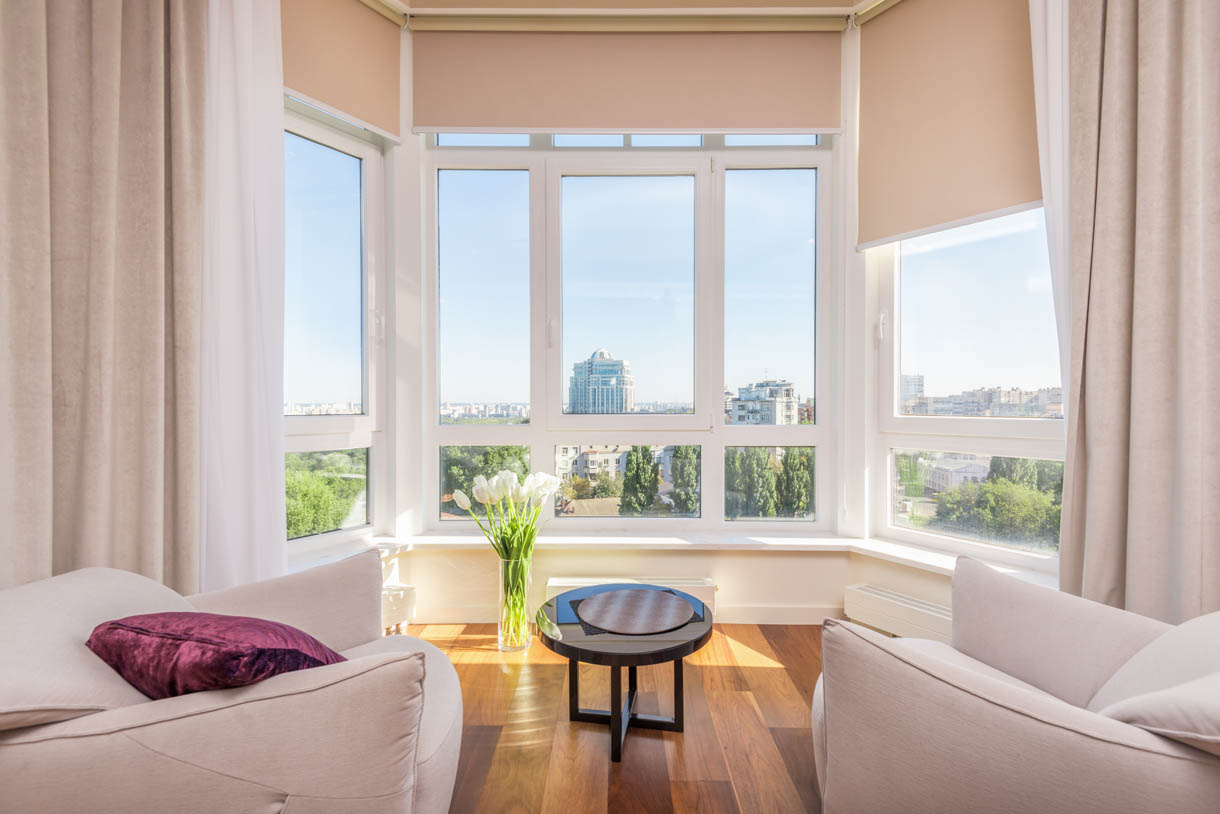By Ritchie Clapson CEng MIStructE, co-founder of propertyCEO
Whether you are converting a commercial building into residential flats, putting some apartments above a shop, or simply doing a humble flip or refurb, there’s one truth you can’t escape if you’re building to sell: no matter what state the housing market is in, you’re likely to encounter some stiff competition.
However, if you are a small-scale property developer, you have a massive advantage over most of the other sellers on the market: you get to design your flats (or houses) from scratch. The layout, design, fit, and finish are all in your hands, whereas all your competitors can do is dish out some Dulux or put in a new kitchen or bathroom. So, given that you have the upper hand, what exactly can you do to make your units out-sell the competition?
Think about sales before building
The first thing to say is that you need to think about selling your homes before you’ve built them and not afterwards. You’ll need to determine who will buy your units and what they’ll be looking for. Are they after one-bed or two-bed flats? Do they want gold taps and Miele appliances, or should you keep things cheap and cheerful? And exactly who are your customers? Will they be downsizers looking for parking and larger rooms to fit their furniture in, families who want outside space and amenities, or young professionals who want restaurants and bars on the doorstep? While a spot of internet research goes a long way, there’s no substitute for conversing with different local residential estate agents to get their insights. If you make assumptions about who your buyers are without checking, then you could find it a struggle to sell your units quickly. Another tip is to ensure you’re aware of any other developments that will likely be on the market by asking agents and looking on the local planning portal.
Design
Now that we know who our customer is, we should focus on the design. Good design will always make units easier to sell, and it frequently adds value too. One often overlooked option is to hire an interior designer since getting their input at the outset can seriously improve the layout/flow of your floorplans and the decor, which can significantly impact buyer appeal. There’s a cost involved, but since your design learnings can be re-used, the payback could span numerous projects.
Maximising the available natural light is an essential requirement in any new home, and it should be a priority in your thinking as it can make all the difference to the ‘feel’ of a place. Feature lighting can also be used to create interest and a more homely feel, and there’s a plethora of design ideas available to choose from.
Details
One of the first rules of developer school is to remember that you’re designing flats for your customer and not for yourself. You might quite fancy the marble splashbacks and gold downlighters, but if they don’t add to your bottom line, they’re a waste of money – you won’t be living there, after all. Oddly enough, it’s the little things that can make a big difference when you’re working to a tight budget. Let’s face it, the DNA of most flats and houses is identical. 95%+ of what customers see is simply a series of spaces enclosed by painted walls and ceilings. What sets them apart is the other 5%, and this is where you can afford to up the budget a notch or two and create a premium feel to your units. For example, avoiding cheap six-panel internal doors and opting for wooden doors with brushed steel fittings will have a significant visual impact. Similarly, metal switches and sockets ooze quality compared to their white plastic counterparts.
Another top tip is to buy entry-level products from premium manufacturers such as Bosch and Neff when choosing your kitchen appliances. You’ll get all the brand cachet without spending a fortune, and your buyers are unlikely to be too worried that the appliances lack all the bells and whistles of the top-end models. Another area to consider investing in is having deeper splashbacks in your kitchens. However, you should choose carefully when it comes to worktops as these can eat into your profits if you’re not careful. Luckily, plenty of good quality options are available at the lower end of the price spectrum if you can resist your granite inclinations.
Bathrooms are an area where premium accents can make a real difference. Make sure your tiled splashbacks go right down to the floor, and consider putting in some LED mirrors, chrome shaver sockets, and decent shower fittings. If you’ve got the space, think about putting in a big shower cubicle, even in a smaller flat. No one likes a tiny shower, and it will compare favourably with other apartments, even if yours has a smaller overall footprint.
Use your headspace
If you’re converting an existing building, then you may be able to open up the existing roof void. You’ve got a few options here; you might be able to create some valuable storage space or, if headroom allows, a small home office. The other option is to create vaulted ceilings. These can be particularly effective in a smaller flat since they greatly enhance the perception of space and add character that your competition may lack.
Another option when converting a commercial building is retaining some of its heritage features, which can add interest and value. The shape of the rooms and the building’s architectural features all add character and opting for a more ‘industrial’ theme with the internal décor can give your flats an added wow factor. Modern flats often have little character and come with modest ceiling heights, making your apartments stand out.
Marketing
So, now we have some great-looking apartments, and we know who we will be selling them to. We now need to fit the final piece of the jigsaw puzzle, which is all about the marketing. You’ll have spoken to several agents right at the outset when you discovered who your customer was, and you’ll have picked one whom you think will give you the best chance of getting some quick sales at a good price. Choosing the right agent isn’t an exact science, but make sure yours has sold similar properties in the same area within living memory. Finding an agent who covers your patch is one thing, but you’re after someone who has actually sold properties nearby.
There are a number of marketing ideas to consider that will make the agent’s job easier. Off-plan sales can work well for new-build schemes but are best avoided for conversion projects where the host building is currently an eyesore. People won’t be able to see past it, even if you invest in some CGI mock-ups. Show homes are another marketing option, but you need to plan these carefully with your contractor since they will need to finish one flat ahead of all the others, which wouldn’t be their usual approach. In a conversion project where the flat shapes and sizes are different, show flats are usually not the best strategy as they won’t be representative of every unit.
Dressing your units is another popular tactic, as it allows customers to visualise living there much more easily. Here you’ll install furniture and soft furnishings before you conduct viewings, which comes at a cost. Will you pay someone to dress the units for you, or will you dress them yourself? If the latter, will you be selling the flats fully furnished for a premium, or will you be ‘undressing’ them, in which case you’ll need somewhere to store your furniture until your next project? That said, be careful when dressing smaller flats, as you don’t want them to look cluttered. And if you’re after some design inspiration, simply visit any local housebuilder’s sales suite and see how they dress their own show flats. Do something similar, and you won’t go too far wrong, but, as ever, ask your estate agent’s advice before deciding.
Managing the sale and your agent
Keep on top of your agent, and don’t be afraid to switch if you’re not getting the results you were hoping for. You should also be demanding regular updates regarding the number of viewings and the feedback of the potential buyers they’ve shown around. Finding out why people didn’t buy can help you refine your sales strategy in the future, even if it’s with a new agent.
Give some thought to the agent’s fee structure, as you’ll want to ensure they’re incentivised to sell quickly without dropping the price every week. If an agent gets a 1% fee on your £100,000 new apartment, they’ll receive £1,000 in commission, whereas you’ll make a £20,000 profit. But, if you drop the price to £90,000, their fee decreases by peanuts but your profit halves. They now have a much easier sales job, but you’re the one who’s taken the hit financially. On the other hand, if they sell at £110,000, your profit increases by 50%, so consider including a ratchet in the agent’s fee mechanism that rewards them for quick sales at a premium price. And don’t try and screw agents down on fees; if selling your units gives them less commission than the other flats on their books, guess how much of a priority you’ll be. It’s far better to pay a premium and get their best performance.
Hopefully, that’s given you some food for thought on how you should think about your sales tactics. If you ensure that your sales strategy is part of your thinking from the outset, you should have every chance of securing both a quick sale and a healthy profit.
ABOUT THE AUTHOR 
Ritchie Clapson CEng MIStructE is an established developer, author, industry commentator, and co-founder of leading property development training company propertyCEO. To discover how you can get into property development, visit www.propertyceo.co.uk
https://www.facebook.com/propertyceotraining/
https://www.instagram.com/propertyceotraining/
https://twitter.com/Property_CEO
https://www.linkedin.com/company/propertyceo
